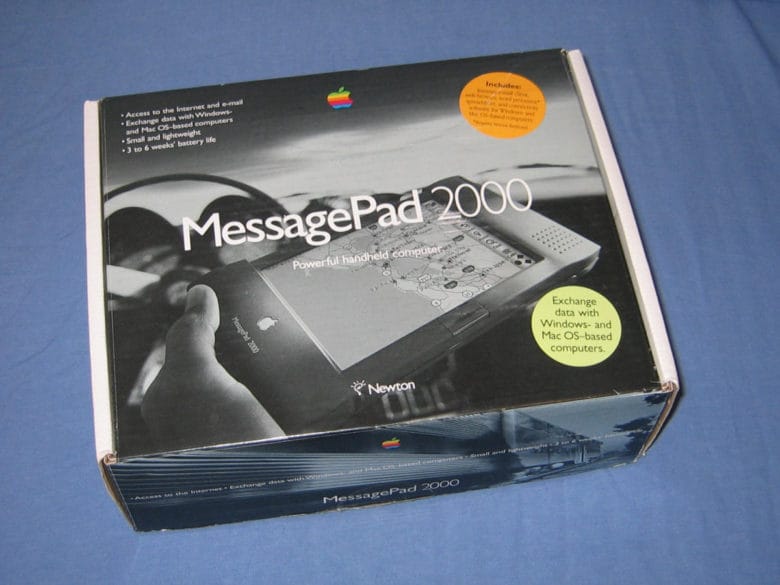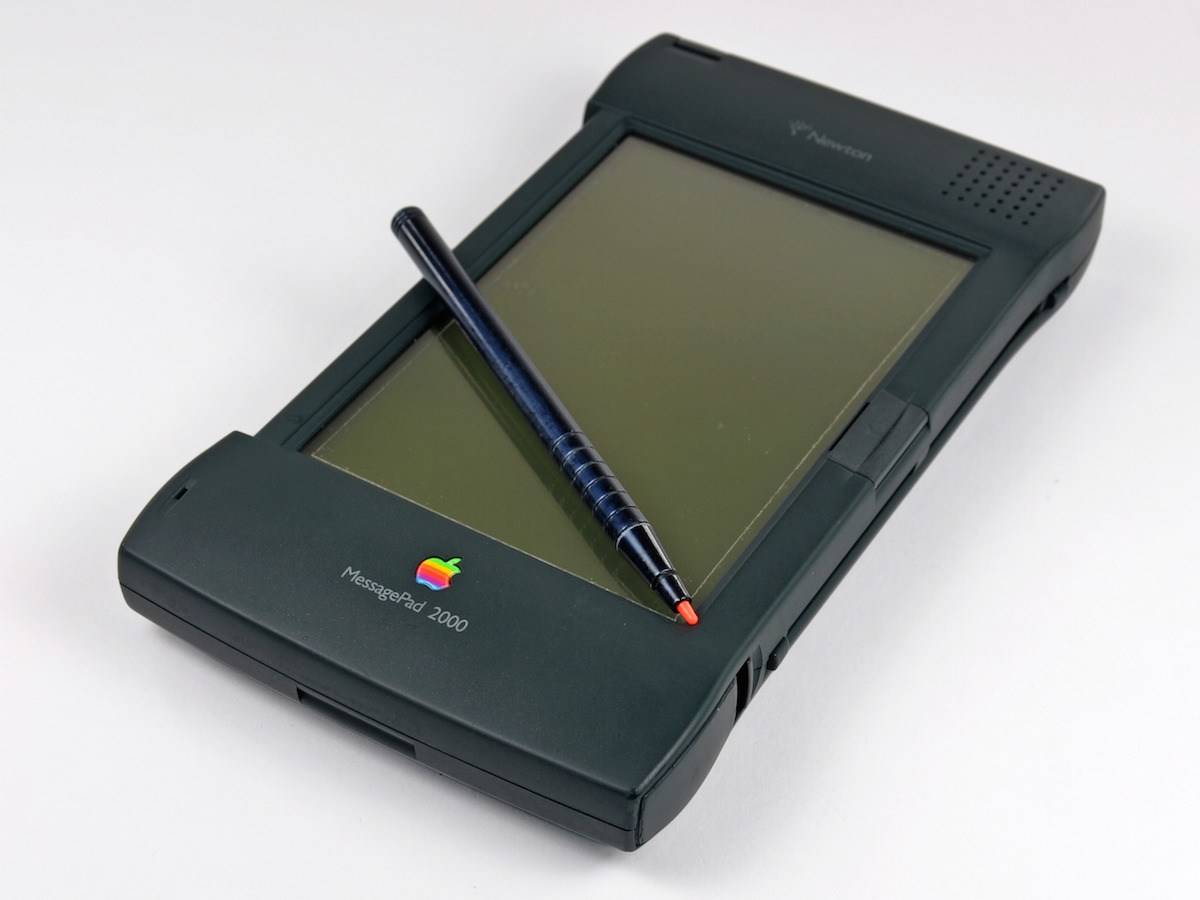 March 24, 1997: The Newton MessagePad 2000 brings major upgrades to Apple’s PDA line, including a far better display and a much faster processor.
March 24, 1997: The Newton MessagePad 2000 brings major upgrades to Apple’s PDA line, including a far better display and a much faster processor.
The best MessagePad yet by a wide margin, it quickly becomes a critical and commercial success. But it won’t be enough to save the doomed product line.
Newton MessagePad 2000: Bigger and faster
Much as the iPhone X brought an OLED screen for the first time, the MessagePad 2000 introduced a major upgrade to the Newton display. Of course, in 1997 that did not mean the arrival of ultra-sharp OLED. Instead, the Newton simply gained a higher-resolution screen (480 by 320 pixels, compared to the previous model’s 320 by 240).
In addition, the screen grew by 20%, measuring 4.9 inches by 3.3 inches, yielding a 100 dpi display. While not color, the MessagePad 2000 for the first time offered 16-level grayscale pixels rather than the simple black-and-white two-tone of the PDA’s predecessors.
The processor got a major upgrade as well. A 160 MHz StrongARM 110 CPU made this model many times faster than previous Newtons while using just one-quarter the power. This meant the MessagePad 2000 could deliver more than 24 hours of continuous battery life.
On top of this, the upgraded Apple PDA packed neat features like dual-mode IrDA-beaming capabilities, which allowed Newton users to wirelessly exchange information with one another. And of course the Newton’s stylus-based handwriting recognition.
Newton MessagePad 2000 software
As far as software went, the MessagePad 2000 came bundled with a calendar app called Dates, a to-do list app called Notepad, a contact manager called Names, as well as the EnRoute i-NET email client, NetHopper web browser, Newton Works word processor and more. For an extra $50, you could buy a spreadsheet app.
Wondering how the MessagePad 2000 got online for email and internet access? This could be achieved by connecting a modem into one of the PDA’s pair of PC Card slots.
MessagePad 2000: Apple’s Newton is not such a failure anymore

Photo: Computers.popcorn
As I’ve noted before in “Today in Apple history,” the Newton MessagePad is criminally underrated as a product line. People frequently write it off as a failure — quite unfairly.
In fact, the MessagePad 2000 showed that the Newton was truly coming into its own.
The Newton had been more than usable since at least 1995, when the Newton MessagePad 120 launched in the United States. Around that time, Apple also released the vastly superior NewtonOS 2.0, which solved many of the problems with handwriting recognition that plagued earlier models.
With its massive boost in power and superior display, the MessagePad 2000 was the best Newton yet. It proved incredibly popular with customers. And that finally laid to rest the notion that the Newton was a commercial bomb.
“The sales we have achieved in our first 30 days and customer response validate our claim that the MessagePad 2000 is a compelling business machine,” Sandy Bennett, vice president of the Newton Systems Group at Apple, said in a press release soon after the product’s launch. “Our bookings rates are running five times as high as they were a year ago.”
Prefiguring the later popularity of the iPod with non-Mac users, an estimated 60% of MessagePad customers used Windows computers. For true believers in Cupertino, it provided proof positive that a mobile revolution was truly underway.
In fact, Apple considered the MessagePad 2000 so successful that the company spun out the device as a separate startup called Newton Inc.
This is (almost) the end, beautiful friend
Sadly, the Newton became one of the casualties of Steve Jobs’ return to Apple in 1997. Given that he needed to cut costs, and that refocusing on the Mac resulted in the massively successful iMac G3 and iBook, it’s hard to say killing the Newton was the wrong decision. Still, it seemed a shame at a time when the MessagePad had finally proven itself.
Apple released just one more device in the series, November 1997’s MessagePad 2100. Jobs canceled the product line early the following year.
The idea of creating a truly great mobile device didn’t go away, of course. Today, the Newton’s legacy is the iPhone, which makes up the overwhelming bulk of Apple’s revenue.
Did you own a Newton MessagePad 2000? Leave your comments below.



